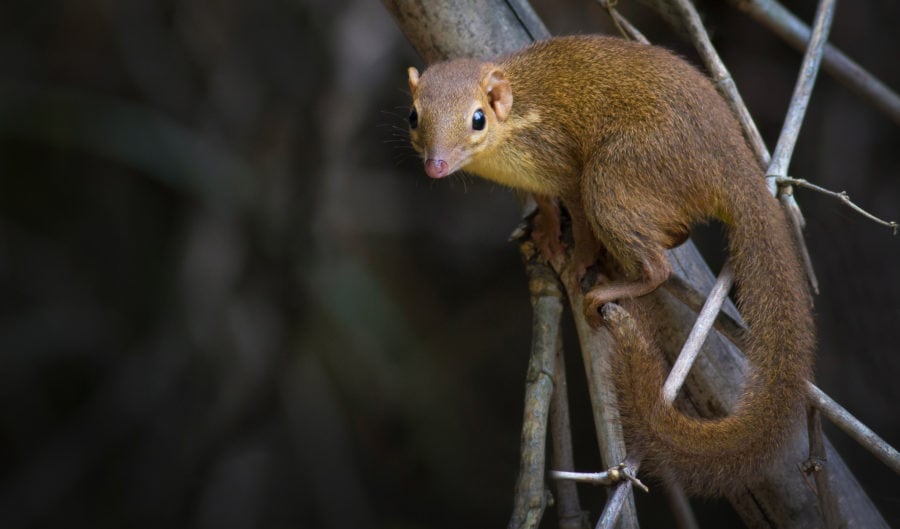Treeshrews love spicy food and can’t get drunk

Bec Crew
Bec Crew

THE ONLY OTHER animal known to seek out the heat of capsaicin – the active component of chilis – is the treeshrew, a tiny mammal found in the tropical forests of Southeast Asia.
Closely related to primates, treeshrews are neither shrews nor exclusively tree-dwelling. There are 20 known species, and all but one belong to the family Tupaiidae, a name derived from the Indonesian word for treeshrew and squirrel, tupai.
It’s no wonder that treeshrews and squirrels share a name – they do look a lot alike. Treeshrews are like the emaciated, stretched-out version of a squirrel.
There is one species that has a unique tail that looks nothing like a squirrel’s: the pen-tailed treeshrew (Ptilocercus lowii), the sole member of the family Ptilocercidae. Native to Thailand, Indonesia, Borneo, and the Malay Peninsula, the pen-tailed treeshrew has a glorious feather-like tail, and is known for its bizarre resistance to the effects of alcohol.
In a 2008 study, researchers found that these little guys consume the equivalent of nine beers a night in the form of fermented nectar from the flower buds of the bertam palm plant – a large, clumpy feather palm that smells heavily of booze.
In fact, the fermented palm flowers were found to contain a whopping 3.8% alcohol, which is one of the highest concentrations ever recorded in nature. Oddly enough, the pen-tailed treeshrew doesn’t get even a little bit tipsy.
“They seem to have developed some type of mechanism to deal with that high level of alcohol and not get drunk,” Marc-André Lachance, a microbiologist at the University of Western Ontario in Canada who co-authored the study, said at the time. “The amount of alcohol we’re talking about is huge – it’s several times the legal limit in most countries.”
While one treeshrew sucks down on alcoholic buds like water, another hungers for the burn of spicy food.
The Chinese treeshrew (Tupaia belangeri chinensis) native to Southeast Asia and China, is occasionally used in research labs because it’s more genetically similar to humans than mice or rats.
A few years ago, researchers from the Kunming Institute of Zoology in the Yunnan province of China were trying to figure out what their treeshrews preferred to eat. To their surprise, when presented with all manner of treats, the animals preferred the chilis.
Turns out, their natural habitat is abundant with the piper plant (Piper boehmeriaefolium), a spicy plant that geographically overlaps with the Chinese treeshrew and produces a chemical compound called Cap2, which is very similar to capsaicin.
In a 2018 study, the researchers concluded that by gravitating towards a spicy plant that other species wouldn’t touch, the Chinese treeshrew had secured a food source all of its own.
The treeshrew weirdness doesn’t even stop there. They’re also known to be fearless of the pitcher plant, a large, carnivorous species that consumes small rodents that drown in its inbuilt water basins. In fact, the treeshrew has formed a symbiotic relationship with the pitcher plant – it feeds on the sweet nectar the plant provides, and relives itself of nutrient-rich dung in the pitcher plant in return:

